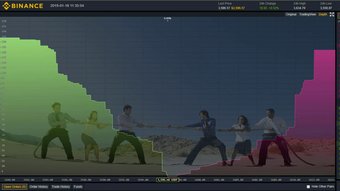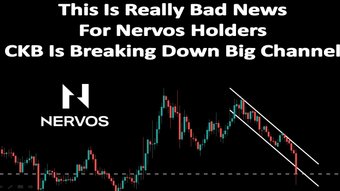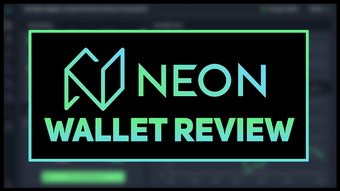#Cryptocurrency Analysis Using On-Chain Metrics - (Chris Coney & Marija Matic) WCSS:002
1
About :
For 7 Best DeFi Strategies To Make You Money click
https://cryptoversity.krtra.com/t/En8qC4kR7udT
--- Transcript ---
Chris (00:21):
Okay. Here we go.
Hi there, guys, and welcome to this week's edition of the Weiss Crypto Sunday Special, special with me, your host, Chris Coney. My guest analyst today is Marija, and the macroeconomic topic that we will be discussing is on-chain metrics. It's one of my favorite topics this one. At least is at the moment. So this whole field of analysis has kind of cropped up, and it's exclusive to crypto because when it says on-chain, it's like on the blockchain. And because blockchain technology is transparent, it allows us to do this whole new field of analysis. So, Marija, please start us off here. When we say on-chain metrics, what exactly are they, and why do they matter?
Marija (01:04):
Hi, Chris. When we say on-chain metrics, it means the information which we can extract from the blockchains. Since majority of the blockchains are transparent, there's a tons of information which we can extract from there, related to the transactions, related to the usage of the centralized applications, the flow of cryptocurrencies, et cetera. So there are many, many things which are very important.
Chris (01:33):
So why does this data matter? And what kind of things can they tell us? This data on the chain?
Marija (01:41):
Well, they can help investors. For example, if you have invested in some token, you would be interested to know if the usage of the token, the number of the transactions are growing or falling. If you have invested in, for example, a governance token of some decentralized application, you would be interested to know how is that the decentralized application performing and the token how it's performing. You would be interested to know is the number of active wallet users growing. Is the number of general wallet users growing or falling? And there's all sorts of information which are very important to investors.
There are things which are important to traders. For example, you can find out the inflows or outflows of cryptos from and to centralized and decentralized exchanges. So you can know and find out if majority of investors want to sell their crypto. If there are large inflows, or they're just buying and accumulating and sending them to their wallets. You can look at the dormant wallets. Very, very large wallets dormant for, I don't know, seven years or more. You can track if they're moving. If people are spending from those wallets. If the old HODLers, very, very long-term investors, are selling or not. So there are tons of information which you can find out, and it's quite important.
Chris (03:25):
So that's the bit I've seen passed around a lot recently. The flows in and out of major exchanges. So I suppose with like Bitcoin, if people are generating a new address every time they receive a transaction, it's kind of hard to track that, which is what individuals do. But with exchanges, it's a bit different. With my exchanges, they give me a single Bitcoin address for all my deposits, right. So at least you could then see that that would always be the same. So in that instance, you'd know that wallet belongs to a particular exchange, right. And then you could see how many Bitcoin were flowing into that. Or, if it were a stable coin, you could see how much tether was flowing in or out. And what most people were saying recently is if a lot of Bitcoin, let's say, is been taken off centralized exchanges, the assumption is that people aren't intending to sell it in the short term. Is that basically it?
Marija (04:23):
Yes, that's true. For example, we are tracking lots of things as a Weiss analytical department, and the last week we've seen, there've been many, many outflows. More outflows than inflows. And we're also tracking specific exchanges like Coinbase or Binance, or Wabi. And because it's very important, we can say that Coinbase... We know that the Coinbase is mostly used by institutions, and we know that Binance is mostly used by retail investors. So we can check who is accumulating more at the moment. Is it institutional investors? Is it retail, et cetera? We can check some of the Chinese exchanges where we can see how the miners are. Are they selling or not?
So, yeah, like last week, we've seen a lot of accumulation by both retail and institutional investors when it comes to Bitcoin. But when it comes to Ethereum and LINK and BNB, Doge, LTC, we've noticed that there were many inflows to exchanges since those coins were reaching all-time highs and jumping like crazy, while Bitcoin was kind of stagnant. And that's why people are probably depositing them to exchanges to try to time the top [porch 00:06:07] or just to be prepared. It's a normal reaction.
Chris (06:10):
That is interesting. So that would suggest if, so say Litecoin runs up in price, you see this big inflow of Litecoin into exchanges because people are preparing to take profits.
Marija (06:22):
Exactly. They're just preparing to take profits, which doesn't necessarily mean that they will sell, but it's what it is. And it's a usual reaction when the coin is being like this on the chart-
Chris (06:40):
Yeah. Sideways.
Marija (06:41):
It means that people are- yeah, sideways. People are accumulating and using... you can see a lot of outflows. Yeah.
Chris (06:47):
Okay. That was interesting what you said about the... because Coinbase provide services to institutions and so on. So that's actually how we start to... I mean, it's not absolutely precise, but it gives us some indication whether it's institutions or retail investors or what's happening, right. So the other thing I was going to say is when we see, say, outflows of Bitcoin from Binance, do we know where that's going? I mean, we assume people are putting it in their ledger, I suppose, but do we know where that's going?
Marija (07:20):
Yeah. We can see where it's going. We can track it. We don't currently track specifically where the Binance funds are going, but yeah, it's possible to track. And well, the most important thing for me is to see that... it's to track the decentralized applications and how they are performing since they are now the big thing and those governance tokens for applications or things like that. This is what's very, very important. But at the same time, we can also see that there is a huge outflow or shift from the number of Bitcoin and Ethereum held, especially Ethereum, held on centralized exchanges, to a DeFi. So people are definitely going non-custodial, which is amazing.
Chris (08:17):
It is. I did want to actually [crosstalk 00:08:19]. Oh, carry on.
Marija (08:22):
If you look at the charts, you will see that the number of Ether on centralized exchanges is... The supply is just falling down. There's very, very few Ether on centralized exchanges right now, also Bitcoin. But if you look at the supply of Ether, which is being used non-custodially on the DeFi, it's just growing. So it's amazing thing. So yeah, we can say that the centralized environment is definitely winning.
Chris (08:58):
Right. So there is a bit of sophistication to this analysis, right. And actually, I challenged some of this that was going around Twitter because the assumption is, "Oh, the Ethereum is moving off exchanges. Therefore people are going to huddle it." And I'm like, "Well, that's not very sophisticated," because what if the Ether is being removed, like you just said, from Binance to Uniswap or some sort of DeFi application? Well, someone can still sell it over there, right. So they might still intend to sell it just on a decentralized exchange.
Marija (09:30):
Yeah. That's why we can... The point is most of the Ethereum, like huge billions worth of Ethereum, are locked. They get locked in DeFi. It's not just being huddled and swapped and things like that. There's the long, very long-term staking happening right now in Ethereum to zero since people cannot remove. And there's like, I'm not sure how much, but maybe even, I don't know, 4% of the supply of Ethereum is already locked there. It cannot be removed until the next phase of Ethereum comes. So there are certain ways to check how much is locked. And usually, people who lock Ethereum, they don't tend to sell. They just chase higher yields. They may unlock it to lock it somewhere else, things like that. So yeah, more and more Ethereum's getting locked.
Chris (10:33):
Okay, great. So the next thing I want to say is what I like about on-chain metrics and public blockchains, in particular, is that they help level the playing field from investors who are institutional investors versus retail investors. So typically, there would be like a hierarchy in terms of access to better, faster, deeper information in the markets. Whereas on-chain metrics it's open to everybody, right. So people say like, "Data is the new oil," which is fine, but if you can't access that data, then it's not a level playing field. So there's tons of free applications out there now where you can query the on-chain data, and anyone who is either a retail investor or institutional can get that information. And there's now a whole bunch of content creators providing commentary on the on-chain metrics as well. I don't know if you've seen any of that.
Marija (11:28):
Yeah, yeah, of course. Yeah, that's quite amazing. The retail investors are having this completely transparent access to the blockchain data, and the point is, do they know how to use it? So you need certain level of knowledge in order to dig and find the information that you need. So that's why some retail investors are going for maybe paid services where that information is kind of systemic. It's kind of collected and represented in a systemic, systematic manner. So it makes sense.
Chris (12:13):
It does. And maybe that's what you were saying.
Marija (12:13):
And it's aggregated.
Chris (12:19):
Yes. Yeah. There was the point you made just there about the... It's what I'm saying about sophistication. So you could just look at one thing that says, "Oh, the amount of crypto on exchanges is falling," and then leave it at that. Whereas, well, it's not as simple as that. You need to sort of combine it with other data, and if you don't know what you're doing, you can't combine it to get any meaning of it. You might actually make it come to a conclusion that's wrong if you don't know what you're doing, right. So that is valid as well. Excuse me. So the last thing I just want to touch on is... I suppose, when it comes to privacy-oriented cryptos, they're more difficult to do on-chain metrics on. Is that right? Because a lot of the transactional data on private coins are private because they're private. So I suppose that screws with on-chain analysis.
Marija (13:06):
Yep. Well, it depends. For example, if you're talking about Monero, Monero is private by default, so we cannot really analyze it. We can't analyze anything on Monero. But if you're talking about cryptocurrencies that have optional privacy, like Dash or Zcash, yeah, we can track lots of info. And I don't know, I'm against optional privacy, since... Quite interestingly, when people are faced with option privacy, they usually decide to don't use the privacy features and just go bare and transparent. And so, yeah, like, I don't know, 95% of the users of Dash or, I don't know, Zcash are actually not using the privacy features. And this is a problem for the rest of for the remaining 5% who are using the privacy features since it's de-anonymized them. It makes them less anonymous due to the technology and the way it works.
So for me, I mean optional privacy, and those coins are not really... They wouldn't be my choice if I want to use privacy coins. So yeah, Monero or some other cryptocurrency, which is private by default, would be my choice if you don't want any information to be transparent.
Chris (14:40):
Sure, sure. So there's one thing I want to make clear for the viewers here is when we're talking about analyzing the blockchain, right. Well, we know because people say, "Oh, is Bitcoin private?" And we'd say it's pseudonymous. It's sort of private but sort of not private. What the hell does that mean? Well, like I said earlier, the reason we know that money is flowing to exchanges is because they're reusing their addresses. So we know that that is Binance's Ethereum address or whatever it happens to be, but I don't want the viewers to get the wrong idea that somehow the on-chain analysis can uniquely identify them. It can't do that, can it?
Marija (15:17):
Yeah, of course. And also, when I'm talking about this de-anonymization of the users, I'm not talking about the names and surnames and real de-anonymization. I'm talking about the time when the transactions were done. I'm talking about the address from which it was done to another address. And when I'm talking about the address, it's just the string of random numbers and letters. It's not like a physical address. It's not a bank account like which bank it is, or it can be connected to the particular user.
But some people want to go private so that not even this information is out there. So, yeah. But when we're talking about pseudonymous, or the level of privacy that you have when you're using Bitcoin. Yeah, no one will know your name. No one will know your address or who you are and who you're sending to, but they can just see... People, when they look at the blockchain explorers, they can see a huge amount of transactions that happen. They can go into each one if they have time and look at the amounts that were sent, the addresses that were sent from and to, or the timestamp, like when it happened. And they can also see if this address was transacting to some other addresses or anything, but they cannot connect it to a particular person.
Chris (16:49):
Exactly. Unless you want them to. So a simple content creator posts their Bitcoin address on their website. Well, they've kind of created a link between themselves and the address. So they've done that voluntarily, but if the address were just on the blockchain, you'd know that that address was being reused, but wouldn't necessarily know who that was, right. So just want to include that in the episode today. Okay, great. So anything else you want to share with us in terms of on-chain metrics before we close out today?
Marija (17:24):
Well, I don't know. I suggest to the viewers to pay attention to how their tokens are performing in regards to the on-chain metrics. In regards to the number of transactions, number of users, number of wallets, number of active monthly wallets, and how those things are performing. I think that's very, very important. And of course, they can follow Weiss or some other analytic company, which analyzes this data for them. As you said, I may notice some things like outflow or decrease or increase, but I'm always digging for the reason because it can be completely stupid reason. Like, I don't know if you are looking at the inflows, and they are very large. Like, I don't know, 500 million into an exchange. I would want to check if there were some tether printed and were they sent to Binance or something like that. Are they kind of rigging the metric, and there are all those small bits and pieces that should be taken into account.
Chris (18:41):
That is a fantastic point. I'm going to build on that for a sec because data in its naked form, it doesn't have any meaning. It's just numbers. So you need a human being, like yourself, to look at that data, piece it together and figure out what it means, right. And that can only come from a human mind, right. The algorithms can crunch numbers, but they don't know what it means, right. If you see, for example, tons of money flow into Binance for tether, for example. Well, you can say, "Well, 500 million of tether was just minted and sent straight there," you can go, "Oh, maybe that's probably Binance's money," but those conclusions can only be came to by an analyst with a thinking mind, right. So that was an absolutely excellent point there.
Marija (19:34):
Yeah. Yeah, well, yes. Also, we have a lot of analysts that are working on algorithms as well and aggregating data, which we think should be aggregated. And there are lots of things that help us out like that to create to better analyze it.
Chris (19:55):
Absolutely. Great stuff. So lots of great insights there, Marija. Thank you very much for being with us today. And myself and all the viewers, thank you very much for being on today, and we look forward to your next appearance.
Other than that, that is all for this week's Weiss Crypto Sunday Special. Keep your eye on your inboxes for next week's episode. Until then, it's me, Chris Coney, saying bye for now.
Marija (20:18):
Bye.
Tags :
Their limit for today is $0!






























Comments:
Reply:
To comment on this video please connect a HIVE account to your profile: Connect HIVE Account